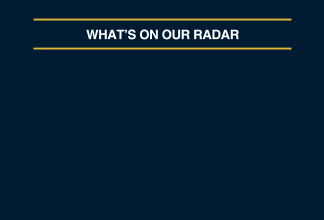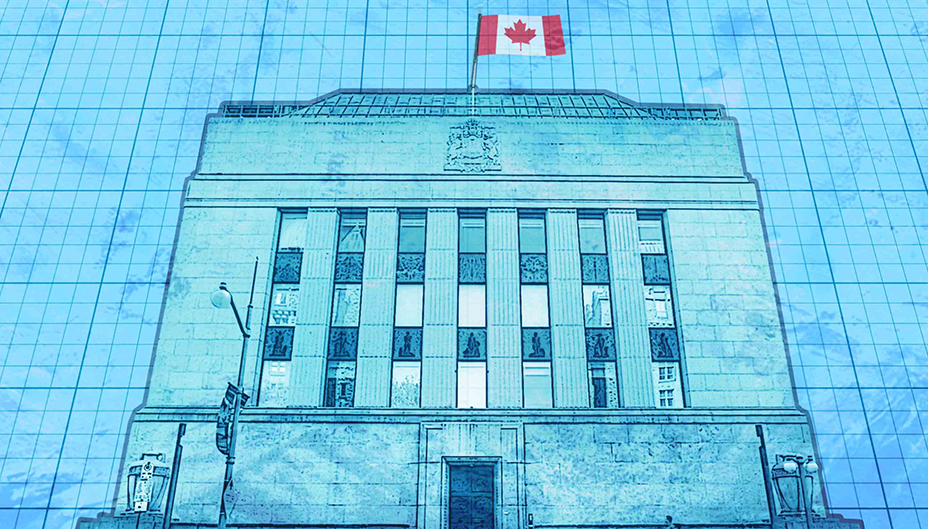Bank of Canada Hikes Key Interest Rate to 1%
Written by Judy McKinnon
Published on April 14, 2022
minute read
Share:
The Bank of Canada raised its benchmark lending rate by half a percentage point on Wednesday, to one per cent, marking the biggest single increase in more than two decades amid ongoing concerns over high inflation.
Canada's central bank said core measures of inflation have all moved higher and it now expects inflation to average almost 6 per cent through the first half of 2022, and to remain “well above" its target range throughout the year. The Bank of Canada aims to keep inflation at two per cent, the mid-point of its target range of one to three per cent.
It said its revised outlook reflects economic uncertainties as a result of Russia's ongoing invasion of Ukraine, spiking oil and natural gas prices, ongoing supply constraints and new COVID outbreaks.
Moving forward, the Bank of Canada said it expects inflation to ease to about 2.5 per cent in the second half of 2023, and return to its two per cent target in 2024.
“There is an increasing risk that expectations of elevated inflation could become entrenched. The Bank will use its monetary policy tools to return inflation to target and keep inflation expectations well-anchored," it said in its rate announcement.
The Bank of Canada said it will begin quantitative tightening, or QT, as of April 25, which means it will stop purchasing Government of Canada bonds in order to let its balance sheet shrink over time. QT is the opposite of quantitative easing, or QE, a tool the bank turned to during the pandemic to help encourage spending and investment. Under QE, a central bank buys government bonds, which the Bank of Canada said it has been doing since November 2021.
Looking ahead, the Bank of Canada said interest rates will need to rise further as a result of “the economy moving into excess demand and inflation persisting well above target." It said the timing of any increases will be guided by its ongoing assessment of the economy and its commitment to its 2 per cent inflation target.
In commentary released following Wednesday's announcements, RBC Economics said it expects more standard 25-basis-point rate hikes moving forward until the rate hits two per cent in October, “though we think another 50 (basis point) increase will be an option on the table in June." The next rate announcement is scheduled on June 1.
Wednesday's hike comes just one month after the Bank of Canada's first rate increase since 2018, when it raised its key policy rate by one-quarter point to 0.5 per cent. While the public doesn't access the key rate itself to borrow or lend money, the so-called overnight rate affects rates for other types of borrowing, such as bank prime rates and interest rates paid on deposits, guaranteed investment certificates (GICs) and other savings.
Read more about the latest rate announcement at rbc.com/economics and explore potential impacts for investors in What Rising Interest Rates Can Mean for Investors.
RBC Direct Investing Inc. and Royal Bank of Canada are separate corporate entities which are affiliated. RBC Direct Investing Inc. is a wholly owned subsidiary of Royal Bank of Canada and is a Member of the Investment Industry Regulatory Organization of Canada and the Canadian Investor Protection Fund. Royal Bank of Canada and certain of its issuers are related to RBC Direct Investing Inc. RBC Direct Investing Inc. does not provide investment advice or recommendations regarding the purchase or sale of any securities. Investors are responsible for their own investment decisions. RBC Direct Investing is a business name used by RBC Direct Investing Inc. ® / ™ Trademark(s) of Royal Bank of Canada. RBC and Royal Bank are registered trademarks of Royal Bank of Canada. Used under licence.
© Royal Bank of Canada 2022.
Any information, opinions or views provided in this document, including hyperlinks to the RBC Direct Investing Inc. website or the websites of its affiliates or third parties, are for your general information only, and are not intended to provide legal, investment, financial, accounting, tax or other professional advice. While information presented is believed to be factual and current, its accuracy is not guaranteed and it should not be regarded as a complete analysis of the subjects discussed. All expressions of opinion reflect the judgment of the author(s) as of the date of publication and are subject to change. No endorsement of any third parties or their advice, opinions, information, products or services is expressly given or implied by RBC Direct Investing Inc. or its affiliates. You should consult with your advisor before taking any action based upon the information contained in this document.
Furthermore, the products, services and securities referred to in this publication are only available in Canada and other jurisdictions where they may be legally offered for sale. If you are not currently resident of Canada, you should not access the information available on the RBC Direct Investing Inc. website.
Explore More

Here’s What Every Canadian Should Know About Estate Planning
Insights from Leanne Kaufman to help you feel more confident as you plan
minute read

3 Things We're Watching This Week
What the Inspired Investor team is watching
minute read

What’s Driving the Recent Surge in Gold Prices
Here are some things to watch with the gold market
minute read
Inspired Investor brings you personal stories, timely information and expert insights to empower your investment decisions. Visit About Us to find out more.







